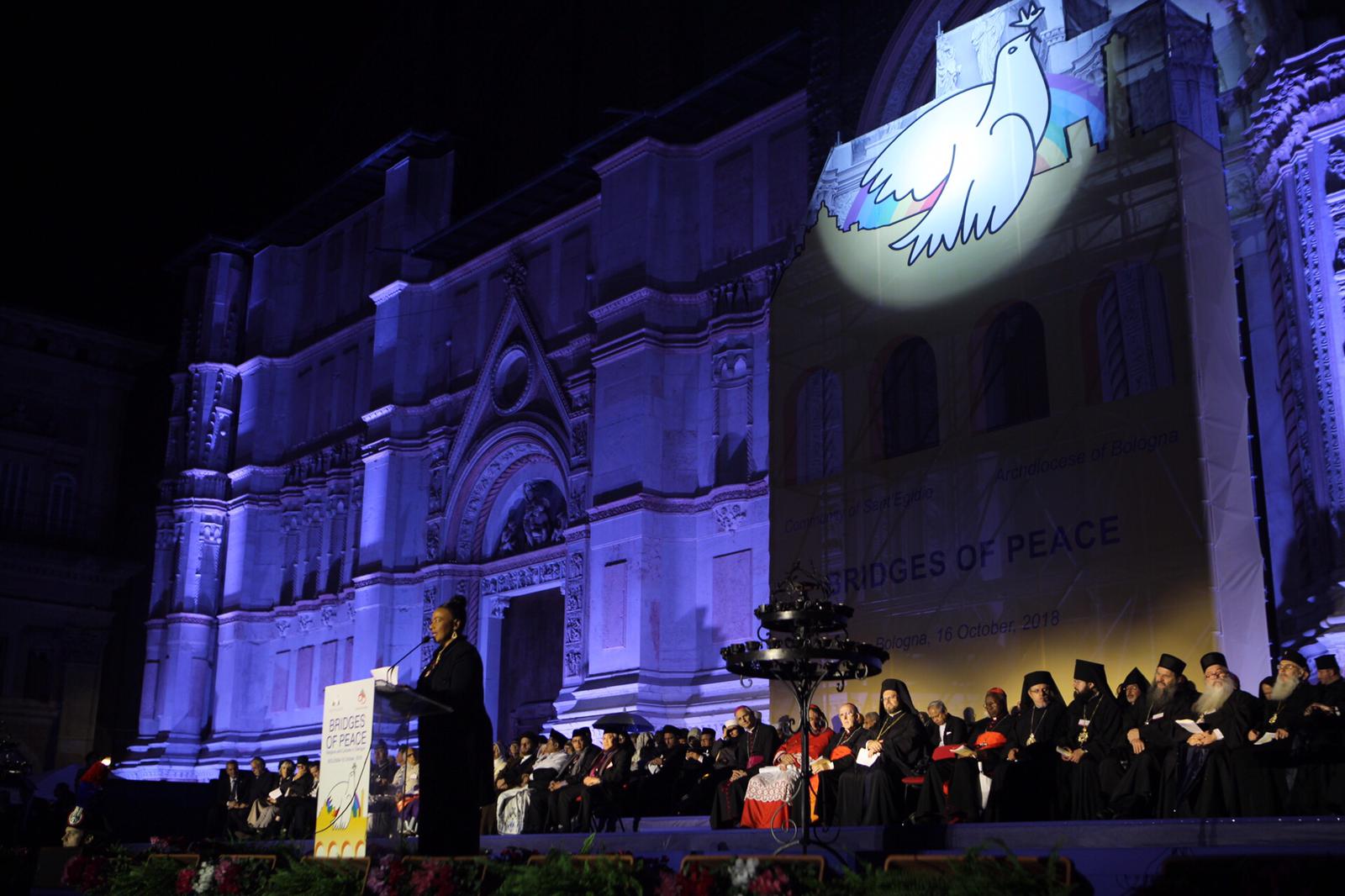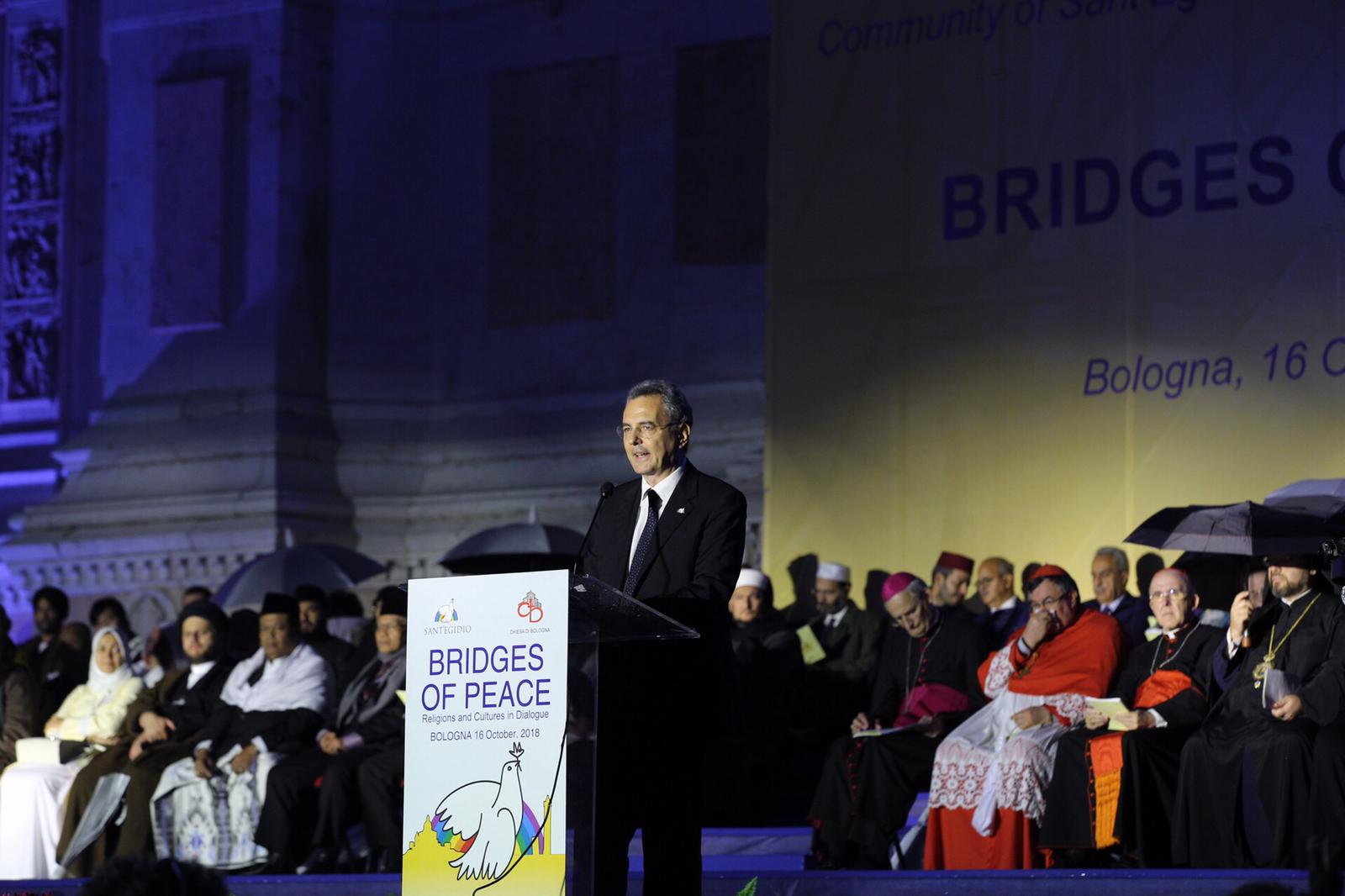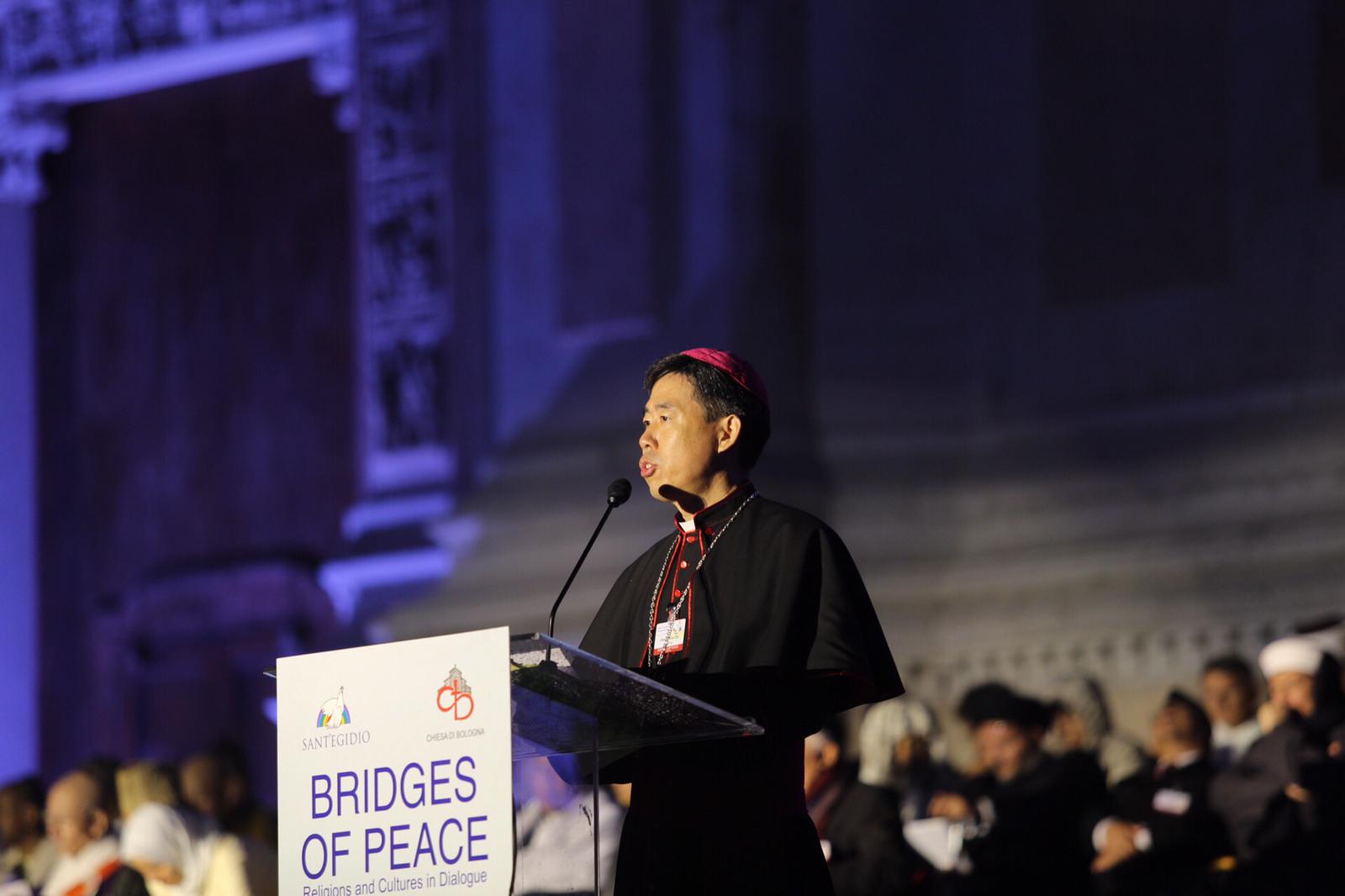Your Eminences, Your Excellences. Ladies and Gentlemen, Dear Friends. I am very much delighted to be here today talking to you upon the kind invitation of our dear host Comunità di Sant'Egidio, to whom I address my gratitude. Your warm welcome and generous hospitality has deeply touched my heart. Another thanks I extend to the Comunita for their hard work and impressive role in spreading the Bible, helping the poor, and fostering ecumenical and interfaith Dialogue.
My happiness is doubled because of the place, and the time. We are gathered in a city known for its University, knowledge, and cuisine, however being in Italy has always been a source of joy for me; this is not my 1st time in the land of art and civilization.
The time is also a reason to celebrate. 40 years ago, on this very day 16th of October, Cardinal Wojtyla was elected Pope John Paul II, the first non-Italian pontiff in modern history. Also, on this very day 16 years ago, the new Bibliotheca Alexandrina was officially inaugurated. Perhaps it is a message reminding us that the role of individuals and institutions could give life and renaissance to their societies by promoting pluralism, coexistence, and peace through Dialogue. So before starting, I will ask you to fasten your seatbelts as I am taking you on a journey of time and place.
All over history, in every empire and every era, coexistence was a source of prosperity, a reason for renaissance, and a way to overcome hard times. I come from Alexandria, an inspiring city which was built by Alexander the Great. Alexander was a disciple of Aristotle, who taught him the concept of Unity in Diversity. Wherefrom, came the vision of establishing the city of Alexandria, a role model of a Cosmopolitan society.
As a city of circa 2000 years of history, Alexandria has had many golden ages, they were different in time and features, but united in one aspect: “Coexistence”. Another example from the history of the Middle East is the renowned House of wisdom of Bagdad; the great public academy, library, and intercultural center, that flourished under Alkhalifa Al-Ma‟mun. Al-Ma‟mun gathered scholars from every corner of the world disregarding their religions or beliefs, and treated all of them with dignity, honour, and respect. The list is long, and it contains lot of nonmuslim names such as Qusta ibn Luqa, and Yuhanna Ibn Masawaih, and many other translators and researchers who were able to preserve, spread and update knowledge.
One more example, which I find to be the most relevant in European history, is based on a comparison between two sovereigns who ascended the throne in the same year: Frederick the Great, King of Prussia, and Maria Theresa, the Holy Roman empress. Both of them came to power after the tragedies of the thirtyyears‟ war between Protestants and Catholics, one of the most destructive conflicts in human history. However, their methods of dealing with such a complicated situation were extremely diverse!
Maria Theresa considered it her mission to rule accurately, carefully, and strictly as a Catholic Sovereign. Some historians give an account that she wanted to deport some thousands of her Protestant citizens in order to maintain a homogeneous Catholic state.
On the other hand, King Frederick of Prussia had another way of seeing the matter. Although he was –as the king- the Supreme Bishop of the Lutheran church, Summus Episcopus, he came to power with a clear vision of the necessity of coexistence for the good of his nation. One of his very first orders as a sovereign was issuing a financial accreditation to build a Catholic cathedral in Berlin, the capital of his Lutheran state. Frederick the great also gave lot of rights to the Jews, like having their own schools, their synagogues, their legislation, and other rights, which made of Prussia an attractive hub in Europe for every skilled artisan, and hence flourished economically and socially.
So as mentioned earlier, several eras, different regions, various civilizations, but one gate to balanced societies: “Coexistence”. Perhaps that‟s why the dilemma of the coexistence and the other is a clear application of Nietzsche‟s Eternal return. These issues existed since the beginning of history and will continue to exist; however diverse are its causes, forms and aspects …
A few decades ago, Samuel Huntington warned of the risk of a clash between civilizations, the predominately Christian West and the predominantly Muslim East. But the clash we are facing today is within rather than between our civilizations, it is within both East and West, and I believe that it is a logic sequence. The rejection of the other is a vicious circle, once you get into it, it becomes tighter and tighter, and the scope of the other becomes narrower and narrower. Unfortunately, today we are facing new practices and trends that impose sectarianism and extremism, which make us forget every lesson humanity was taught through history. Suddenly immigration topped the list of national security concerns in every country, terrorism came back with its ugly face, not in newspapers and TV shows, but this time as a threat at home! These trends and practices are easy tools to strengthen obstacles for dialogue and coexistence in the main three fields; Politics, Economics, and Cultural Aspects.
- Politics where many politicians are selling their merchandise with fear, basing their views on mistakes and misunderstandings of the past and hence enhancing rejection and division because fearful people always need a protector!
- Economics is no less important. When information is mispresented, the potential of multiplying opportunities and increasing the wealth of a nation by adding new know-hows would be seen as a threat of dividing the same resources amongst a bigger number of people.
- Finally, cultural and religious aspects would be the most obvious obstacle and the easiest way conflict can arise, where we can see the tendency of claiming one‟s own culture to be superior to others‟.
Now after going through the problem allow me to tackle the three steps to improve the pre-conditions for pluralism and co-existence …
1st step is Redefinition I believe that the major problem of our era lies upon a tremendous misconception. We need to revise our definition of Dialogue, tolerance and the other. Let me share with you this experience, two years ago I was asked to moderate a session about interfaith dialogue at a conference on Countering Terrorism. The panel had prominent religious leaders, where the Imam cited some precious verses of the Quran venerating monks and Christians, the priest talked about how we all worship the same God, and the conversation went in this direction where everyone is assuring the other that we are all humans very similar to each other, if not identical!!
I was in a very tough situation because as a moderator, I should always be neutral… but I couldn‟t help it! This lack of acknowledgment of difference was very disturbing to my convictions. So once the floor was open for questions, I left the podium, went down and took my place in the line with audience to comment. I approached the mic and said, “Reverend Father, and Reverend Imam, I have bad news and good news; the bad news is that we are not the same! The good news is that this is not a problem!” You see, similarity is not a condition for Dialogue, quite frankly there is little to no dialogue between similar people. It is a misconception to associate living together and dialogue with similarity. Moreover, the use of Tolerance consists of an ugly superiority. „Tolerate‟ is a verb that designates how I live with pain, not how I live with the other: it reflects the generosity of someone that allows him to bear the other to some extent and under conditions! There is therefore, no mention or reference to the joy in meeting with the other, the other who is my path to discover myself and further my potential!
2nd step is Recognition Once I redefine the other that is completing me and the dialogue that will enable a healthy interaction, I will see no harm in coexisting with him, and my eyes will be opened to the many opportunities available because he is around. And hence, I will fully recognize him as essential members of my community with full rights and full duties, and accordingly I will integrate him in my calculations and my plans for a strong colourful community!
3rd and final step is Reconciliation which is the ultimate goal of going back to our humanity, going back to God‟s will who created us different but in harmony, different in order to complete each other and to know ourselves better, and to know the fruits that dialogue and living together produces in us.
Finally, after going around in time and place, I would like to conclude with a prayer of St. Francis of Assisi, which I think is very adequate to our gathering:
“God make me an instrument of your hands
Where there is discord may we bring harmony,
Where there is error may we bring truth,
Where there is doubt may we bring faith,
And where there is despair may we bring harmony!!”
Thank you !!




